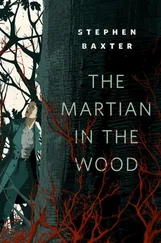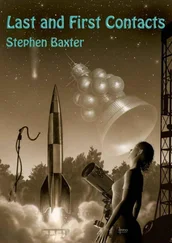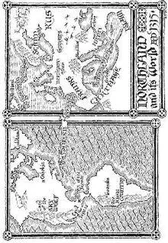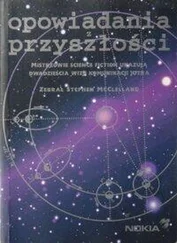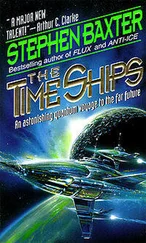Emre had perforce come to spend much of his time in the home of his parents, deep in the heart of that ramshackle part of Constantinople south of the Golden Horn which foreigners then called by the archaic name Stamboul. Life after the injury was difficult, of course. But there were consolations. Emre was blessed with loyal brothers and one sister, all older than he was, and a rising generation of nieces and nephews. That was how the writing began; as well as making up shadow plays, he assisted the children with their own writing exercises, and wrote out the stories he made up for them. Some of these he placed with a Stamboul newspaper, whose editor encouraged him to do more. His mother, who had survived her husband, probably thought it a foolish endeavour and a waste of time – but then her crippled son, largely bedridden, now had nothing but time, and why not let him waste it?
He could hardly be a roving reporter. But he soon discovered he could journey in time, with the help of books his family bought or borrowed for him. He wrote topical pieces on aspects of the city’s history, and later graduated to better-paid work for guide books for the foreigners who swarmed through Constantinople: thanks to the oil, visitors in recent years so eager to prove themselves friends to the Ottomans and not foes. The Schlieffen War had seemed likely to destabilise the Ottoman empire almost as much as it had the Russian, but it seemed to Emre that in recent years the situation had grown calmer. The Sultan had been restored, to no great enthusiasm. The British insisted on their ‘protectorates’, to ensure access to the Suez canal, and to the oil of Mesopotamia, but otherwise kept themselves to themselves. The Germans, meanwhile, had proven themselves useful allies at least in the short term – fighting to fend off Russia’s ambitions to own Constantinople itself. Allies in the short term: perhaps you could hope for no more than that.
But now, in the middle of this complex swirl of history and ambition, the Martians had landed.
Constantinople was almost unique in the Second War in that the first landing of the Martians’ invasion party fell within the bounds of the city itself, landing in that more modern part of the city north of the Golden Horn known dismissively by the locals as Frengistan – ‘Foreigner Town’. Hotels, business centres and embassies had been flattened indiscriminately, and few of the surviving Turks mourned.
Soon, though, the Martians had been ready to move. They advanced through the districts of Pera and Galata, and then the fighting-machines simply waded through the waters of the Golden Horn north of the new German-built Galata Bridge, and into the old city. Centuries before, the ancient Roman city walls had been no defence against the Turks with their gunpowder weapons; now they proved no obstacle to the Heat-Ray. It is to be wondered if the Martians sensed anything of the antiquity of the quarters into which they probed, the glittering legs of the fighting-machines towering over the dusty houses and bazaars, and the ancient, glittering mosques. But then, I suppose, to a race as antique as the Martians, even Constantinople is as evanescent as a traveller’s pitched tent.
It was unfortunate that Emre was left behind during the flight.
The Martians’ advance into Stamboul was a shock to the inhabitants; communications in much of the empire, even the older parts of the capital, were still primitive in 1922. An alarm had been sounded, the local police running from house to house and ringing bells. One of Emre’s brothers, dragging his children behind him, had come to the door to collect their mother.
And Emre, in his room at the back of the house – a wounded soldier too stubborn and proud to call out – stayed where he was. So it was that when the Martians came to his neighbourhood, Emre was entirely alone.
The first he saw of them was a kind of slim pillar passing his window. He realised later that he had seen the leg of a fighting-machine, picking its way through the dilapidated neighbourhood as an adult might step cautiously across a carpet strewn with toys.
Emre had a vehicle of his own, a kind of low cart made for him by one of his brothers – practical, but hated by Emre, for it was like a beggar’s chariot. Still, now he used his strong arms to lift himself down from his bed and onto the cart, and rolled through the deserted house to the front door.
Something was coming down the street.
Emre saw a thing like a swollen metallic spider, so huge it all but filled the narrow street, side to side, but its five limbs carried it over the cobbles with uncanny grace. As it passed, tentacular limbs probed into the houses to either side, the open doors and windows. And what Emre thought was a sack of leather was riding on its back. This was the controlling Martian. It was thus in some parts of the world, where the Martians sent in their handling-machines to explore densely inhabited neighbourhoods, in advance of destroying them – or perhaps in search of feedstock, a fate that, fifteen years before, had so nearly had befallen Walter Jenkins and the curate in the ruined house in Sheen.
The Martian seemed to spot Emre. It stopped, freezing to an eerie stillness. Emre too waited, sitting on his cart, as the Martian sat on its own machine. They were strange mirror images, Emre thought, each dependent for movement on a mechanical aid.
Afterwards, Emre would always wonder how the encounter would have worked out, if not for the child.
It was a boy, barefoot, aged no more than five or six – Emre wasn’t sure if he knew him – somehow left behind in the evacuation. Now he stumbled from a doorway. He looked around, and then started running towards Emre, presumably the only adult he had seen all morning.
Emre reacted quickly. He waved his arms. ‘Get back!’
But the Martian was almost as fast. Emre saw from the corner of his eye as a metallic limb held out a cylinder – it was a Heat-Ray projector – and swept it through the air like a wand. Walls exploded, windows shattered, wooden frames burst into sudden flame.
And the near-invisible beam brushed the child.
Emre was not the only Turk to encounter Martians that day. After the invasion of England in 1907 the great Islamic empire had studied the Martians as a potential enemy, for, among much other damage, they had destroyed the Shah Jahan mosque in Woking. Even now a brave young officer called Mustafa Ataturk was leading a force in defence of the ancient and glorious Ayasofya – and later this heroism would be a platform for Ataturk, rehabilitated under the Sultanate and encouraged by the Federation of Federations, to achieve great things on a world stage. The old city itself was resilient; it had survived invasions, the fall of empires, earthquakes, fires, and in recent decades coups and counter-coups. It would survive even an invasion from another world.
But at that moment Emre knew none of this. He was alone against the Martians – but not powerless. Emre had been crippled for ten years, but he was only thirty years old, and still strong in his upper arms. Enraged by the wanton destruction of the child, paddling at the road’s cobbles, he used all his strength to hurl himself at the Martian. Perhaps he could smash a hole in that great fleshy lump in the top of the machine before he was killed.
But the Martian coolly regarded him, from lidless eyes. Then it turned and receded from his view, effortlessly outrunning him, before Emre had to give up, exhausted.
It was some time before Emre had the courage to seek out the remains of the child. And he found a strange shadow play.
So rapidly had the Heat-Ray passed – and perhaps it was on some reduced setting for the safe use by its controlling Martian in such an enclosed space – that it had incinerated the child entirely, but had merely scorched the surface of a wall behind. And so a kind of inverted shadow of the child remained, caught running in its final moment, as if painted on the darkened wall.
Читать дальше

